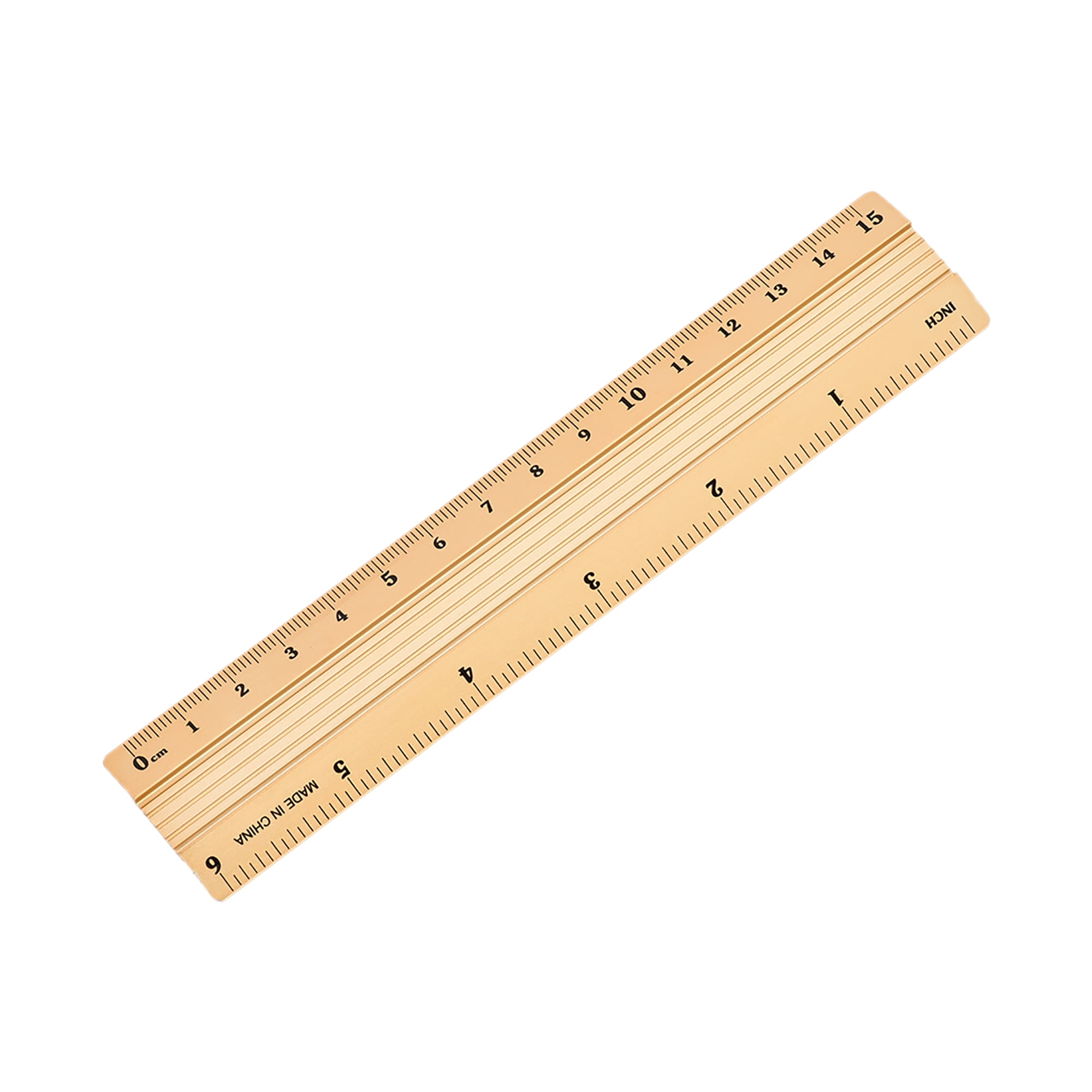
When I first received an Australian metric ruler, it had nothing but millimeters, and my mind quickly responded to its ease of use. This is true even if you designate the millimeter graduations as tenths of centimeters. You are always holding the first digit in your mind 1 and then counting to the next digit, which is 5 and then creating the answer of 1.5 cm. So how is this done? One first looks at the 1 cm designation, then counts the millimeters, and concatenates them with a decimal point to obtain the answer. Assuming one knows which are cm and mm, a person can, for example, measure something with an American “Metric” Ruler, which is say 1.5 cm long. Someone actually thought about this and marked both! Unfortunately, it now gives one two possibilities for what the numerical marks might designate, instead of resolving the situation. To my surprise, the store brand rulers have both mm and cm designated at the end. The use of multiple units is a clear violation of Naughtin’s Laws and only serve to obfuscate the experience of a direct cognitive understanding of magnitude.Ī ruler that acknowledges both cm and mm units are on itīut in reality, both millimeters and centimeters exist on this ruler. Ok, we have simplified this to just 5′ 10 1/3″ but that’s still two units–designated with quotation marks. For instance a person’s height might be 1 yard, 2 feet, 10 inches and 1 barleycorn tall. One of my biggest complaints is the common mixing of units in imperial. Until I actually started using metric exclusively, I had never noticed this. It was my first realization that American “Metric” Rulers (AMR) actually had two units, and the imperial side only used inches. I explained the situation that the large marks are centimeters and the small divisionsĪre millimeters.

One notes that it is labeled millimeters, and therefore one would expect, that like inches, each numbered mark, 1, 2, 3 and so on would be in millimeters! I looked at it in astonishment, and realized that anyone not familiar with the metric system could easily make this mistake.



Architect's scales may be flat, with 4 scales, or have a symmetric 3-lobed cross-section, with 6 scales.Ruler which indicates mm graduations - But cm are numbered Scales were traditionally made of wood, but today they are usually made of rigid plastic or aluminium. In common usage both are referred to as a ruler.Īn architect's scale is a specialized ruler designed to facilitate the drafting and measuring of architectural drawings, such as floor plans and orthographic projections.īecause the scale of such drawings are often smaller than life-size, an architect's scale features multiple units of length and proportional length increments.įor accuracy and longevity, the material used should be dimensionally stable and durable. A device for drawing straight lines is a straight edge or ruler. In scientific and engineering terminology, a device to measure linear distance and create proportional linear measurements is called a scale. A scale ruler is a tool for measuring lengths and transferring measurements at a fixed ratio of length two common examples are an architect's scale and engineer's scale.


 0 kommentar(er)
0 kommentar(er)
